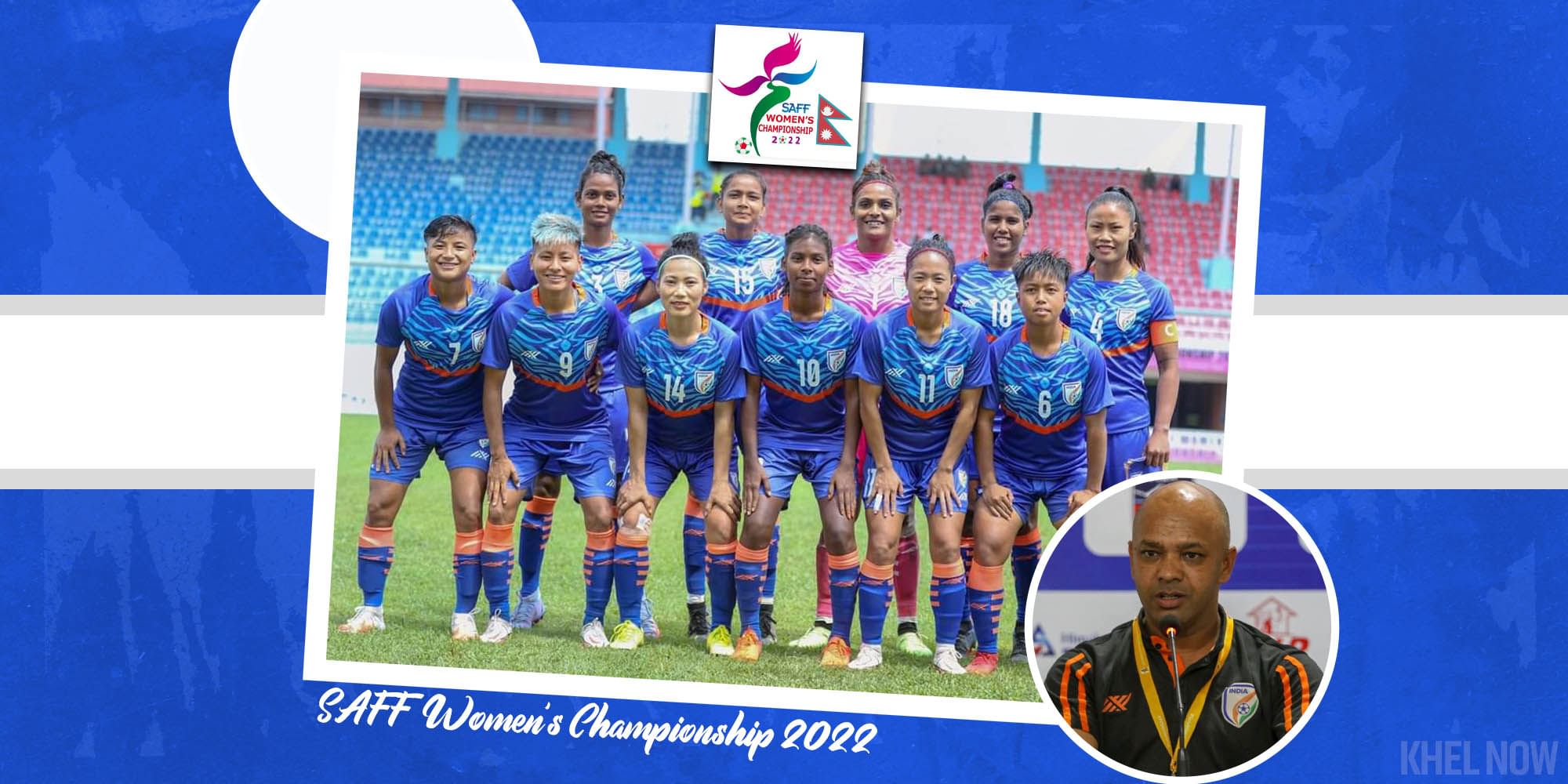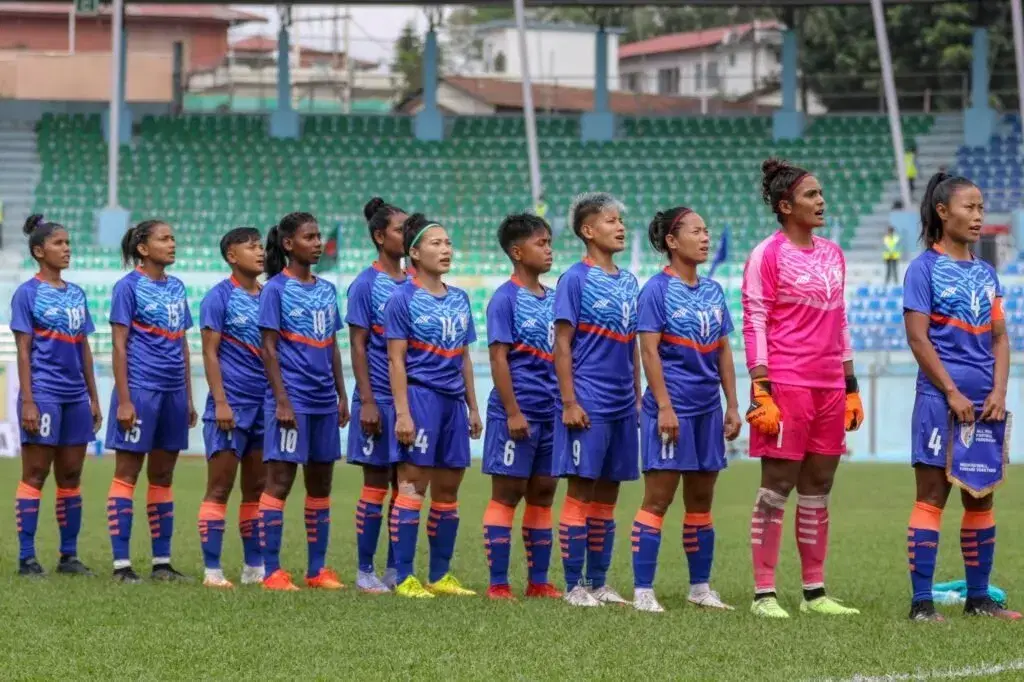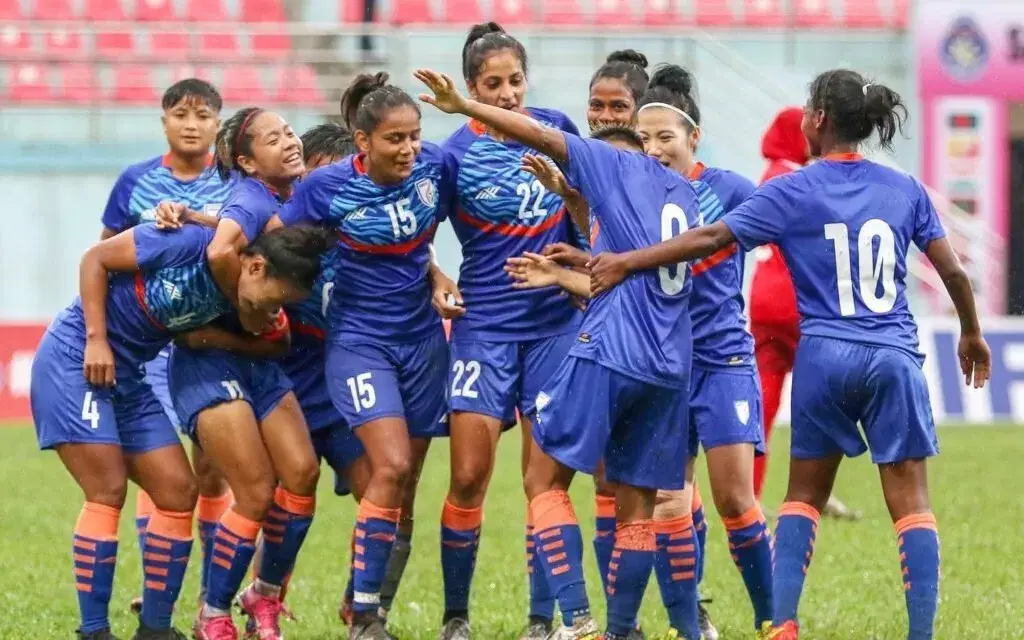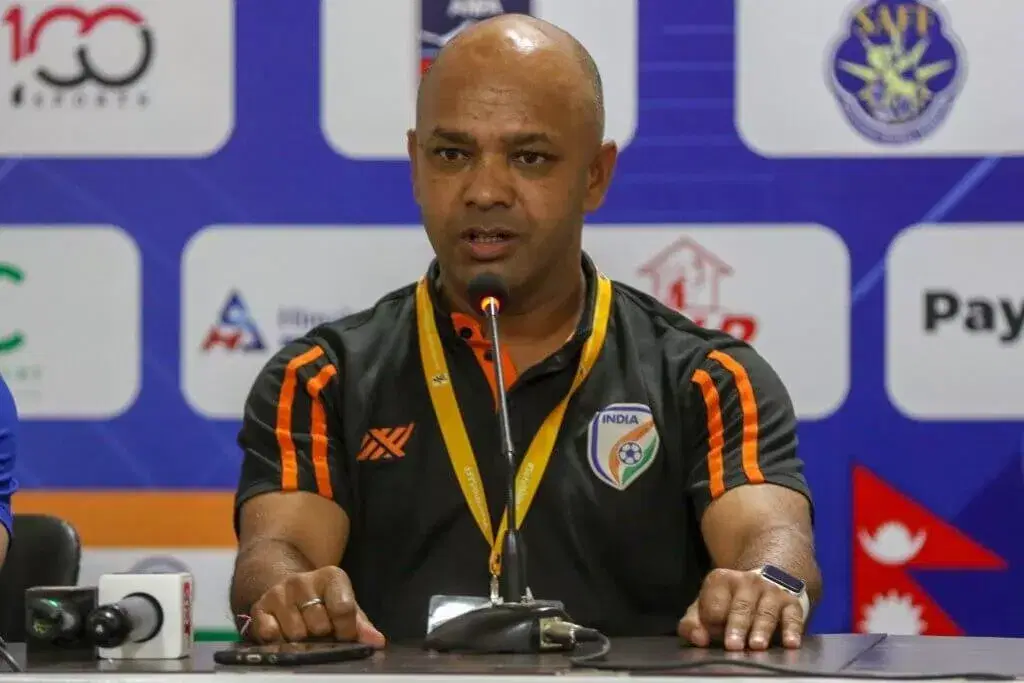SAFF Women's Championship Review: Underwhelming campaign leaves India with many questions

(Courtesy : AIFF Media)
The Blue Tigresses shockingly lost in the semifinal against a spirited Nepal by 1-0.
India was looking for their sixth consecutive SAFF Women's Championship title, having won all five editions so far. With a star-studded lineup consisting of Anju Tamang, Sandhiya Ranganathan, Aditi Chauhan, and Ashalata Devi, India began the tournament as clear favourites. The team looked well on the path to achieving their sixth title by winning their first two matches. However, after that, the team lost its way in the last two matches. It displayed a dismal performance in both these games, the last being the semifinal that led to their elimination.
The tournament showed us that working under an interim head coach in a big tournament is never a good idea. Even though the coach was able to inspire the team in the first two matches, it soon lost the plot. What was expected to be an easy title defence went haywire as the team lost its composure at crucial moments. The management should see the tournament as a reality check and take steps to prevent such debacles from happening in the future.
The Matches
India started the tournament very comfortably by registering a 3-0 win over arch-rivals Pakistan. The whole team played good football and appeared to be in sync. Pakistani midfielder Maria Jamila Khan scored an own-goal, while the other two goals were scored by Dangmei Grace and Soumya Guguloth. It was an easy win for the team and a good start to the title defence.
India faced the Maldives in their second match. They began right from where they had left in the last fixture and won 9-0. Five different players were on the scoresheet, with Anju Tamang scoring four goals. It was complete dominance by the Blue Tigresses and was a statement win. The team played brilliantly in the entire match, without looking under much threat. The players appeared to be well on track of their title defence.

India's fortunes started to change from the third match onwards. It faced Bangladesh, and lost the game 3-0. Bangladesh completely dominated proceedings and outplayed India in almost all departments. India conceded easy goals at frequent intervals and invited needless pressure. In the attacking department, the team did not look sharp and was not able to create a clear chance throughout the entirety of the game. It was a shocking defeat for the team. However, having qualified for the semis, the management was not too worried.
The semifinal match was against Nepal. The encounter was no different from the previous one as India displayed an extremely lacklustre performance in front of around 7,500 Nepal supporters. Nepal won the match 1-0, scoring the only goal in the injury-time of the first half. India tried to respond in the second half. However, their efforts were futile. None of the players were able to make any significant impact on the game. Changes made by Suren Chettri in search of an equalizer did not pay dividends. The equalizer remained elusive till the end of the match and India crashed out of the competition.
Positives
A good display in the first two games
It is always hard to find positives for a team that is not able to fulfill its expectations. Yet, the way India played in the first two matches is a good takeaway from the tournament. In these games, the whole team was in sync with each other and played some scintillating football. They kept possession, played beautiful passes, and created numerous chances. The opponents looked clueless in front of India's creative movement of the ball, allowing India to score three and nine goals, respectively.

Individual brilliance
India's first two matches in the competition proved to be highly rewarding for players like Anju Tamang and Dangmei Grace. They scored four and three goals respectively in these games, with Anju netting all four in a single game. They proved too strong for opposition defenders and scored at will. Anju Tamang's four-goal display was the highlight of the tournament for India. In addition, players in midfield and defence also played well in these games, aiding India to keep its clean sheets.
Negatives
Bad display of football in crucial matches
After beginning the tournament almost perfectly, expectations about India's title defence became enormously high. From this point on, India began to lose the plot. Despite Bangladesh and Nepal being relatively weaker teams, India succumbed to shocking defeats against them in consecutive fixtures - the latter being in the semifinal. The whole team played poorly in these games. The attackers were not able to create enough chances and lacked composure in the box. The midfield also played poorly and provided space to the opposition. Most importantly, India conceded goals at the wrong time, costing them the title.
Team Identity
India appeared to be a team with a proper plan in its first two matches. Often deploying a 4-3-3 formation with occasional tweaks, coach Suren Chettri was able to create an identity for the side. Nine-ten players started in all the matches, thus, providing the team a proper shape and character. However, all these gains were lost in the team's final two games. In these games, the team looked out of shape, sync, and options. Even though mostly the same set of players took the field, the team did not look cohesive or organized. They lacked creativity and ideas, especially after conceding goals. In the games India conceded, the defence looked in disarray. Thus, the management has a lot of brainstorming to do for upcoming competitions.
Top Performers
Anju Tamang

Anju Tamang was clearly a bright spot for India in this edition of the SAFF Championship. She plied her trade quite well and controlled the team at the heart of midfield. She was also India's highest goal-scorer with four goals. Her performance inspired the team in the first two games, which India won comfortably. Even in the matches where India lost, she tried her best to orchestrate a comeback after conceding.
Dangmei Grace
Despite the early exit of the team, this edition of the SAFF Championship proved to be a good tournament for Dangmei Grace. She scored three goals for the country, including a brace. She kept the Indian right-wing active, consistently attacking opposition defences from the right side. However, lackluster attacks from India in the last two games proved to be a dampener for her performances.
[KH_ADWORDS type="2" align="center"][/KH_ADWORDS]
Under Performer
Renu Rani
It was an underwhelming tournament for Indian striker Renu Rani. She started all the matches for India, but failed to score even once. Being one of the primary attackers of the side, she was expected to be on the scoresheet. Even though there was no problem in the first two games, she could have put more effort into scoring in the games that India lost, especially the semifinal. Overall, it was a very poor tournament for her and fans would want her to make a comeback in the team's upcoming projects.
Coach's Report Card

India went to Nepal to defend its title under the guidance of interim coach Suren Chettri. He had a bad tournament as India were clear favourites and still lost. Despite having a brilliant start, the team could not continue with the required momentum. The coach needs to take the responsibility for such a debacle. He was not able to marshal the troops well and his team conceded poorly. It lacked composure, which was quite evident on the pitch. Moreover, the team also appeared to have no plan in place after it conceded.
Read: Why Indian women's team need a top permanent head coach
The coach was not able to inspire the team to make a comeback in the second half of the semifinal. The team was even unable to play well. None of Chettri's substitutes made any positive impact in the team's bad outings, barring Soumya Guguloth. However, her inclusion was never enough and the coach did not seem to have an answer to the defensive prowess shown by Nepal in the semifinal.
Lessons Learned
The 2022 SAFF Women's Championship proved to be a harsh reality check for the strong Indian side. India has a FIFA ranking of 58 and all other SAFF teams are ranked above 100. Despite such difference in quality, India lost two matches and bowed out, paving way for Bangladesh to emerge as the new champions. This shows that the management cannot take any tournament for granted. And it definitely should not send any of our teams to play in an international tournament under an interim coach. The team management should always have stability before the commencement of any important competition.
From a more important perspective, the stakeholders should do introspection and look for the on-field reasons which led to this debacle. While dreaming of becoming a powerhouse of Asian football, India cannot lose their plot in relatively smaller tournaments. Hence, it becomes a prerogative for the AIFF to investigate what went wrong in footballing terms and ensure that the same is not repeated. Going forward, AIFF should address the underlying issues of women's football to ensure that the team brings more glory to the country.
Where passion meets insight — blending breaking news, in-depth strategic analysis, viral moments, and jaw-dropping plays into powerful sports content designed to entertain, inform, and keep you connected to your favorite teams and athletes. Expect daily updates, expert commentary and coverage that never leaves a fan behind.